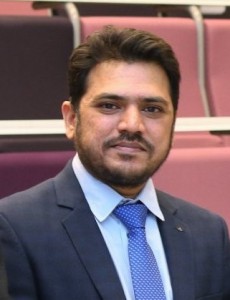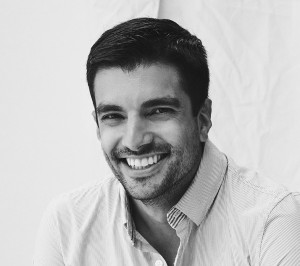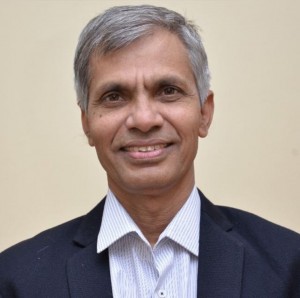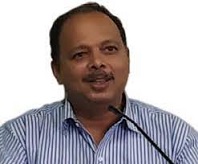Keynote #1
w
Dr. Carlos Viegas
University of Coimbra,
PORTUGAL
w
From Robotics to AI: Leveraging Scientific Breakthroughs to Promote Forestry Operations and Sustainability
w
Abstract - Forests encompass about 31% of the Earth’s land area, playing a critical role in both our economy and the environment. However, their survival is increasingly jeopardized by the impacts of climate change, deforestation, and other human-induced threats. To safeguard forest ecosystems for the future, it’s imperative to implement a blend of conservation strategies and sustainable forestry practices. The forestry sector faces additional challenges due to dwindling manpower, exacerbated by the harsh conditions of forestry work and rural depopulation. This underscores the urgency for engineers and scientists to devise innovative solutions that promote both sustainability and profitability in forestry operations.
Emerging technologies such as Robotics and Artificial Intelligence (AI) offer promising avenues for revolutionizing forestry practices. These technologies can assist or even supplant human labor in demanding, repetitive, or hazardous tasks. However, integrating robotics into forestry operations poses multifaceted challenges, spanning various domains of research and development. This keynote presentation will delve into recent breakthroughs in Forestry Robotics and AI applications, spanning from the use of Unmanned Aerial Vehicles (UAVs) for remote sensing and forest mapping to the deployment of autonomous forestry machinery and AI-driven tools for wildfire management. By providing an overview of this dynamic field with profound economic and societal implications, this talk aims to inspire further research and innovation in forestry robotics, particularly in addressing critical issues like sensing, mobility, planning, and autonomous decision-making.
w
Bio - Carlos Viegas is an Assistant Professor in the Department of Mechanical Engineering at the University of Coimbra. He holds a Master of Science degree in Mechanical Engineering from the University of Coimbra, Portugal, and a Ph.D. in Mechanical Engineering, specializing in Management and Industrial Robotics, from the same institution. As the head of the Field Tech Laboratory at CEIF/ADAI, he is dedicated to advancing technological solutions in various domains, including autonomous robots, remote sensing, embedded systems, and fire engineering. Over the past 12 years, he has contributed to over a dozen national and international projects within these fields and has an extensive publication record, with over 50 international publications, 4 international patents, and 6 book chapters to his name. Additionally, he is a Co-Founder of three technological spinoffs: Bold Robotics, Lda., Hazred Lda., and Sim4Safety Lda. His expertise and entrepreneurial ventures underscore his commitment to driving innovation and practical applications in the realm of mechanical engineering and related fields.
=========================================================================================
Keynote #2
Prof. (Dr.) Suresh Gosavi
Hon’ble Vice-Chancellor,
Savitribai Phule Pune University (SPPU),
Pune, India
w
Nanoscale Smart Sensors Technology Trends in Biomedical Application
w
Abstract - Nanoscale smart sensors have emerged as promising tools in the field of biomedical engineering, offering unprecedented capabilities for real-time monitoring, diagnostics, and therapeutic interventions. This keynote provides an overview of recent advancements and trends in nanoscale smart sensor technology, with a focus on their applications in biomedicine. Topic will discuss the design principles, fabrication methods, and integration strategies that enable the development of highly sensitive and selective nanosensors. Furthermore, topic will explore their utilization in various biomedical applications, including disease diagnosis, drug delivery, and physiological monitoring. Additionally, challenges and future directions for the translation of nanoscale smart sensors into clinical practice are discussed, highlighting the potential impact of these technologies on personalized healthcare and precision medicine.
w
Bio - Prof. Dr. Suresh Gosavi holds a Ph.D. in Electronic Sciences and has vast experience in teaching and research. He has written for more than 324 scientific articles in journals and conferences. He has a citation of ~6878 having h-index of 41. In addition to various areas of electronics and physics, Dr. Gosavi has worked on nanoparticles and nanocomposites. Over the past 17 years, he has been involved in teaching a variety of courses, including electronics, nanotechnology, the physics of semiconductor devices, optoelectronics, and others.
Dr. Gosavi has done his studies from primary to graduation in Jalgaon district only. Later he did his post-graduation in Nashik, Pune. Thereafter he started teaching as a professor at SP College in 1992. In 1996 he completed his Ph.D. He also did a post-doctoral fellowship in the US between 1998 and 2000. He started his service in the Department of Physics in 2004.
==========================================================================================
Keynote #3
w
Prof. (Dr.) Rajnish K Kamat
Vice-Chancellor,
Dr. Homi Bhabha State University,
Mumbai
w
Empowering Sustainable Development through Advanced Sensor Technology and Data Science: A Path towards a Happy Community
w
Abstract - The recent times, the convergence of various technologies such as Sensors, VLSI Design, Signal Processing, Radar, ICT, Communication, Sensor Networks, Data Science, and Artificial Intelligence (AI) holds enormous potential to address the global challenges. This talk explores the role of the aforementioned technologies in achieving Sustainable Development and poverty eradication, ultimately contributing to the creation of happy communities. The very basis of this transformative progress lies in the advancements of sensors and VLSI design, which empower the creation of effectual and miniaturized devices. Sensors, with the niche combination of sophisticated signal processing techniques, empower the radar systems, that helps in keeping track of environmental changes, disaster management and mitigation as well as in resource allocation.Integration with Information and Communication Technologies (ICT) combined with the sensor arrays, and the latest advances in communication protocols especially from the perspective of reducing their power hungriness enables real-time data transmission which further leads to getting insights through big data analytics. These technologies form the backbone of smart systems that optimize energy consumption at the minimal latency, improve agricultural yields, and helps in widening the access of healthcare services in remote, inaccessible areas. Additionally, the utilization of AI, data science based predictive techniques on the big data generated by sensor networks and smart infrastructure enables reliable analytics, personalized healthcare, and smart resource management. These technologies empower decision-makers with actionable insights and facilitates automation and efficiency in various walks of societal life.This talk thus highlights the profound impact of the state of art technologies on poverty eradication and sustainable development. Data which has become the fuel of the modern economy contribute to evidence-based policymaking, targeted interventions, and inclusive growth. The synergy of these technologies fosters economic empowerment, access to education and healthcare, and sustainable resource management, all crucial aspects of poverty alleviation. As we progress towards achieving the SDGs, it becomes evident that the integration of advanced sensor technology, data science, and AI is pivotal. These technologies pave the way for a more inclusive, resilient, and prosperous future. By focusing on the convergence of these technologies, we aim to create a roadmap for empowering sustainable development, fostering a happy community, and leaving no one behind in the journey towards progress and prosperity. The talk will highlight some of the above-mentioned dimensions of sustainable development by interweaving of the smart technology with human endeavors.
================================================================
w
Keynote #4
w

w
Dr. Pankaj Wasnik
Assoc. Director
Sony Research India
Media Analysis Lab
Bangalore, India
w
Stepping Beyond Single Modality
w
Abstract - Deep learning has evolved significantly over the last decade, transitioning from single-modality approaches to multimodal learning. Early works such as AlexNet, VGG, and ResNet demonstrated the power of CNNs in image classification tasks and laid the foundation for the deep learning and computer vision revolution. Recognizing the power of CNNs and RNNs, researchers explored the role of multimodal learning to enhance the single-modality approaches further. Techniques like Multimodal Compact Bilinear Pooling (MCB) allowed us to integrate text, images, and audio information, leading to breakthroughs in tasks like image captioning, VQA, and speech recognition. Today, multimodal deep learning is at the forefront of AI/ML research. Models like Vision Transformer (ViT) and BERT provide robust representations of input data, which can be fused easily by various fusion techniques. Recent examples like LLaVA, a novel end-to-end trained large multimodal model combines a vision encoder and Vicuna for general-purpose visual and language understanding. In this keynote, we will delve into the intricacies of multimodal deep learning, exploring its evolution, current state-of-the-art, and the exciting prospects that lie on the horizon.
w
Bio - Pankaj Wasnik serves as an Associate Director at Sony Research India (SRI), Sony’s India research lab. With a Master’s degree in Medical Imaging and Image Analysis from the Indian Institute of Technology, Kharagpur, and a Ph.D. in Computer Science from the Norwegian University of Science and Technology (NTNU), Norway, he brings a diverse academic background to his role. As the head of the Media Analysis group at SRI, he is dedicated to driving innovation and advancing technologies to meet Sony’s complex business and research objectives. His primary focus lies in developing cutting-edge computer vision and deep learning algorithms for Sony’s entertainment business, with a particular emphasis on media content analysis and video/speech generation. His research contributions have been published in top computer vision and machine learning conferences such as CVPR, WACV, BMVC, and NAACL. His main research interests include multimodal generative models, computer vision, machine learning, and video analysis.
w




